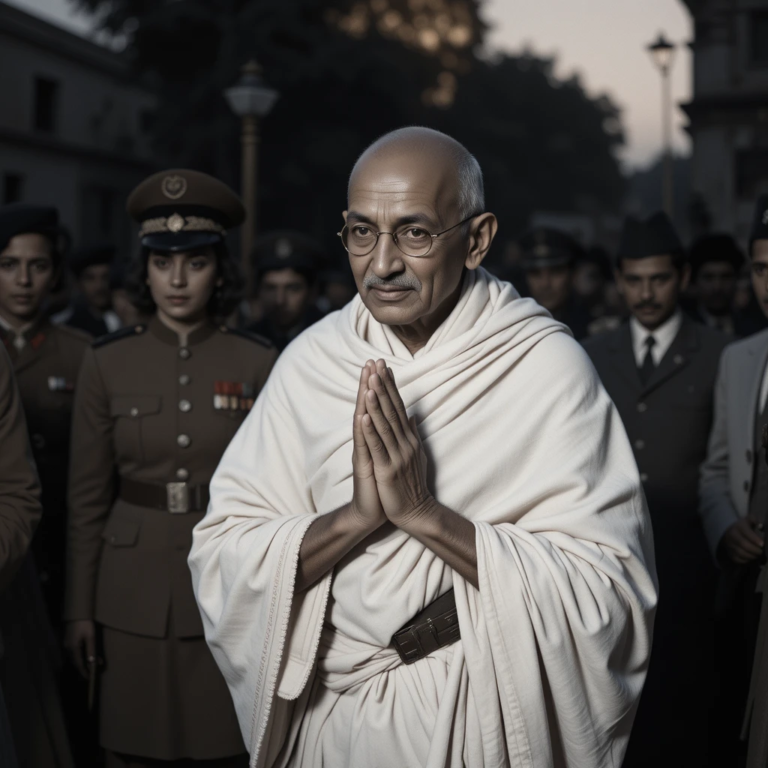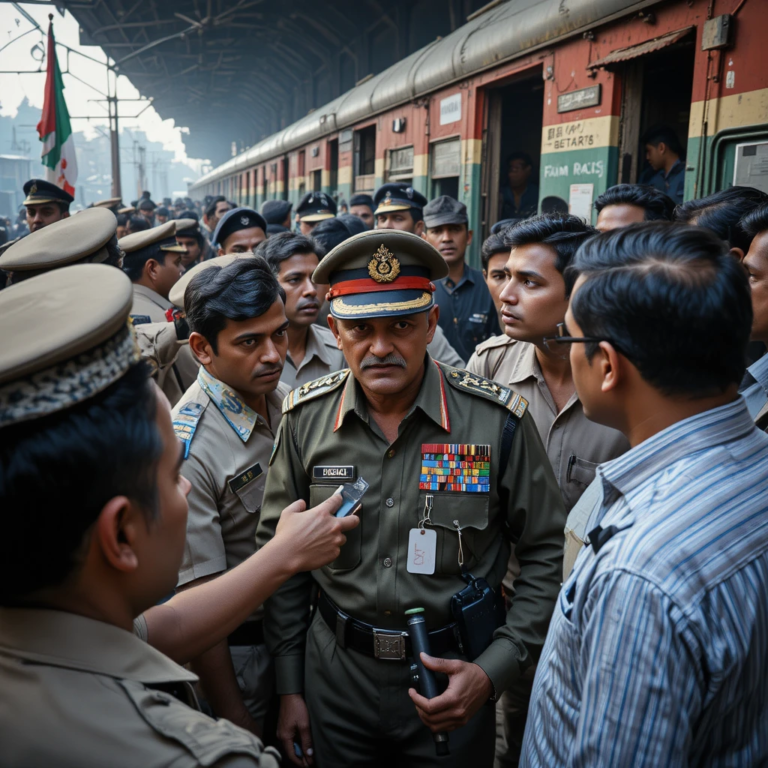Introduction
The Delhi Vijay of 1753, often romanticized as the “Conquest” or “Plunder” of Delhi, represents a watershed moment in the annals of 18th-century Indian history. This event saw Maharaja Suraj Mal, the indomitable Jat ruler of Bharatpur, orchestrate a daring military campaign that led to the temporary seizure and extensive looting of Old Delhi, the heart of the crumbling Mughal Empire. Occurring amid the empire’s precipitous decline, the conquest underscored the shifting power dynamics in northern India, where regional potentates like the Jats, Marathas, and Rohillas vied for dominance as central Mughal authority waned. Suraj Mal, hailed by contemporaries as “the Plato of the Sinsinwar tribe” for his astute political maneuvering and strategic brilliance, allied with the disgruntled Mughal wazir Safdar Jang to exploit internal fissures within the imperial court. This alliance culminated in a swift and devastating assault that humiliated Emperor Ahmad Shah Bahadur and his vizier, Ghazi-ud-Din Imad-ul-Mulk, exposing the fragility of Mughal rule.
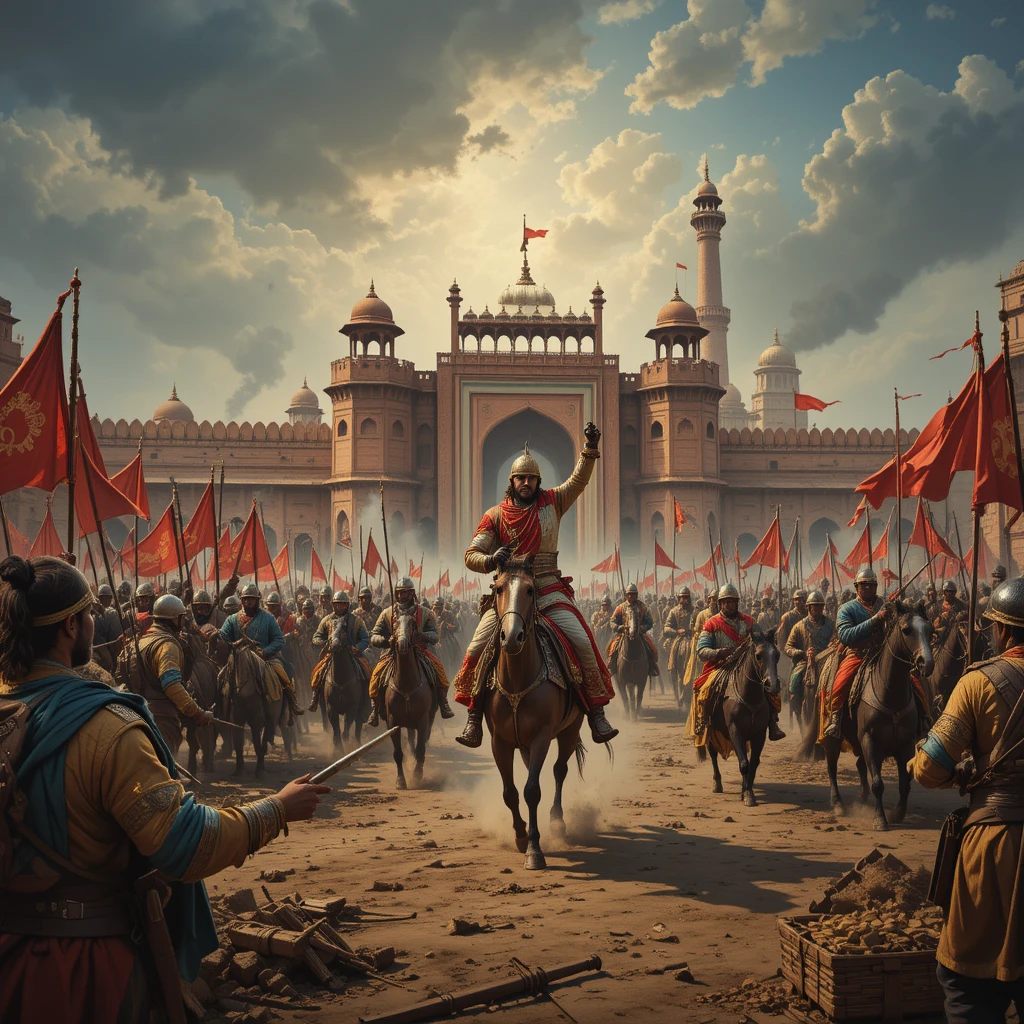
Table of Contents
At its core, the Delhi Vijay was not merely a military raid but a symbolic assertion of Jat autonomy and resilience against centuries of Mughal subjugation. The Jats, an agrarian community from the Doab region, had long chafed under imperial taxes and incursions, evolving from peasant rebels into a formidable kingdom under leaders like Churaman and Badan Singh, Suraj Mal’s predecessors. By 1753, Suraj Mal had consolidated his realm, encompassing territories from Agra to Haryana, fortified by impregnable strongholds like Lohagarh in Bharatpur. His forces, estimated at 10,000 to 25,000 well-disciplined infantry and cavalry, were adept at guerrilla warfare and rapid strikes, leveraging the flat terrains of the Yamuna-Ganga plains. The conquest, commemorated annually as “Delhi Vijay Diwas” on May 10 among Jat communities, evokes themes of heroism, unity, and defiance, with modern celebrations featuring social media tributes, processions, and educational seminars that highlight Suraj Mal’s legacy as a protector of dharma and a master strategist.
Historiographically, the event is documented through a mosaic of Persian chronicles, European traveler accounts, and later colonial histories, each offering nuanced perspectives. Primary sources like the Tarikh-i-Ahmad Shahi, a contemporary eyewitness narrative, provide granular details on the chaos in Delhi, while biographical compendia such as Maasir-ul-Umara profile key Mughal figures involved. Secondary works, including Sir Jadunath Sarkar’s Fall of the Mughal Empire and Girish Chandra Dwivedi’s The Jats: Their Role in the Mughal Empire, synthesize these accounts, emphasizing the socio-economic underpinnings of the Jat uprising. Folk legends, such as the tale of Suraj Mal avenging the honor of a Brahmin girl named Hardaul, add cultural layers, though they lack corroboration in primary records and appear more as moral allegories. This article delves into the background, chronology, battles, outcomes, and legacy of the Delhi Vijay, drawing on these sources to reconstruct a comprehensive narrative. In an era of imperial decay, Suraj Mal’s triumph not only enriched his coffers through plunder but also accelerated the fragmentation of Mughal sovereignty, paving the way for further regional assertions and eventual British dominance.

The broader context of the mid-18th century reveals a Mughal Empire besieged on multiple fronts. Post-Aurangzeb (d. 1707), successive emperors grappled with rebellions, fiscal insolvency, and invasions, including Nadir Shah’s devastating sack of Delhi in 1739. By Ahmad Shah’s reign (1748–1754), court intrigues dominated, with wazirs like Safdar Jang and Ghazi-ud-Din wielding de facto power. Suraj Mal, born in 1707 to Badan Singh and Rani Devki of the Sinsinwar clan, inherited a nascent Jat state forged through alliances and opportunism. His early life was marked by fortifying Bharatpur in 1733 and establishing it as a capital by 1743, complete with massive walls that symbolized Jat defiance. Described in historical texts as possessing “political sagacity, steady intellect, and clear vision,” akin to Ulysses, Suraj Mal navigated alliances with Mughals, Marathas, and Rajputs, always prioritizing Jat interests.
Background: The Mughal Decline and the Rise of Jat Power
The Mughal Empire’s decline in the 18th century was a protracted process, characterized by administrative paralysis, economic strain, and the emergence of semi-autonomous regional powers. Following Aurangzeb’s death in 1707, the empire fragmented under weak successors, with nawabs, subahdars, and zamindars asserting independence. Invasions by Nadir Shah in 1739 and Ahmad Shah Durrani in the 1740s further depleted the treasury and eroded prestige. By the 1750s, Emperor Ahmad Shah Bahadur’s court was a hotbed of factionalism, where Persianate nobles like Safdar Jang (Nawab of Awadh) and Ghazi-ud-Din Imad-ul-Mulk vied for control, often resorting to alliances with external forces.
Amid this turmoil, the Jats of the Bharatpur region rose as a potent force. Originating as agrarian cultivators in the fertile Doab, the Jats had a history of resistance against Mughal overreach, dating back to Gokula’s rebellion in 1669. Under Churaman (d. 1721), they transitioned from bandits to rulers, extracting chauth (protection money) from Mughal territories. Badan Singh, Suraj Mal’s father, formalized this by receiving the title of “Raja” from Jai Singh II of Jaipur in 1722, establishing Bharatpur as a semi-independent state. Suraj Mal ascended in 1733, expanding his domain through military prowess and diplomacy. His early campaigns, such as the Chandaus War of 1745 against Asad Khan, showcased his leadership, where Jat forces decisively defeated Mughal-Afghan troops, boosting morale and resources.
Suraj Mal’s kingdom by 1753 spanned key districts, supported by a robust economy from agriculture and trade routes. He fortified Bharatpur with Lohagarh, an “impregnable” mud fort with moats and bastions, designed to withstand sieges. His army, comprising 75,000 infantry and 38,000 cavalry at peak, emphasized mobility and artillery, influenced by European techniques via French mercenaries. Politically, Suraj Mal maintained pragmatic relations with the Mughals, paying nominal tribute while expanding influence. His support for Ishwari Singh in Jaipur’s succession war (1747–1748) against Madho Singh honed his alliances with Rajputs and Marathas.

The immediate catalyst for the 1753 conquest was Safdar Jang’s ouster. In late 1752, Ahmad Shah reclaimed Awadh and Allahabad from Safdar Jang, humiliating him and prompting rebellion. Safdar Jang, a Persian Shia noble, sought allies among anti-court factions, including Suraj Mal, who saw an opportunity to weaken Mughal hold on Delhi and secure plunder to fund expansions. Folk narratives, like the Hardaul legend—where Suraj Mal allegedly attacked to save a Brahmin girl from the emperor’s advances—add a dharmic dimension, portraying him as a defender of honor, though historians dismiss it as apocryphal, rooted in oral traditions rather than records.
By March 1753, Safdar Jang camped outside Delhi, bolstered by Suraj Mal’s forces and rebels like Salabat Khan. The Mughal side, led by Ghazi-ud-Din with Rohilla support under Najib-ud-Daula, was disorganized, setting the stage for conflict. Suraj Mal’s motivations were multifaceted: economic gain from plunder, strategic buffer against Mughals, and assertion of Jat sovereignty in a post-Mughal order. This background illustrates how regional powers exploited imperial weaknesses, foreshadowing the empire’s total collapse by the late 18th century.
Prelude to the Conquest: Alliances and Tensions
The prelude to the Delhi Vijay unfolded in the months leading to May 1753, marked by escalating court intrigues and strategic positioning. In December 1752, Emperor Ahmad Shah’s decision to revoke Safdar Jang’s control over Awadh and Allahabad stemmed from fears of his growing influence. Safdar Jang, a descendant of Burhan-ul-Mulk, had risen as wazir through alliances but faced opposition from Sunni nobles like Ghazi-ud-Din, who manipulated the emperor. Humiliated, Safdar Jang feigned departure for Awadh on March 26, 1753, but halted near Delhi, rallying supporters. He dispatched envoys to Suraj Mal in Bharatpur, appealing to their shared interests against Mughal centralism.
Suraj Mal, ever the pragmatist, weighed the risks. His prior experiences, including aiding Safdar Jang in minor skirmishes, inclined him toward the alliance. By April, Jat contingents joined Safdar Jang’s camp, swelling his army to over 20,000. Suraj Mal contributed 10,000–15,000 troops, including cavalry skilled in hit-and-run tactics. Meanwhile, Ghazi-ud-Din fortified Delhi, enlisting Rohillas under Najib-ud-Daula and other loyalists like Sadil Khan. The emperor’s forces, however, suffered from low morale and unpaid salaries, a chronic issue in the declining empire.
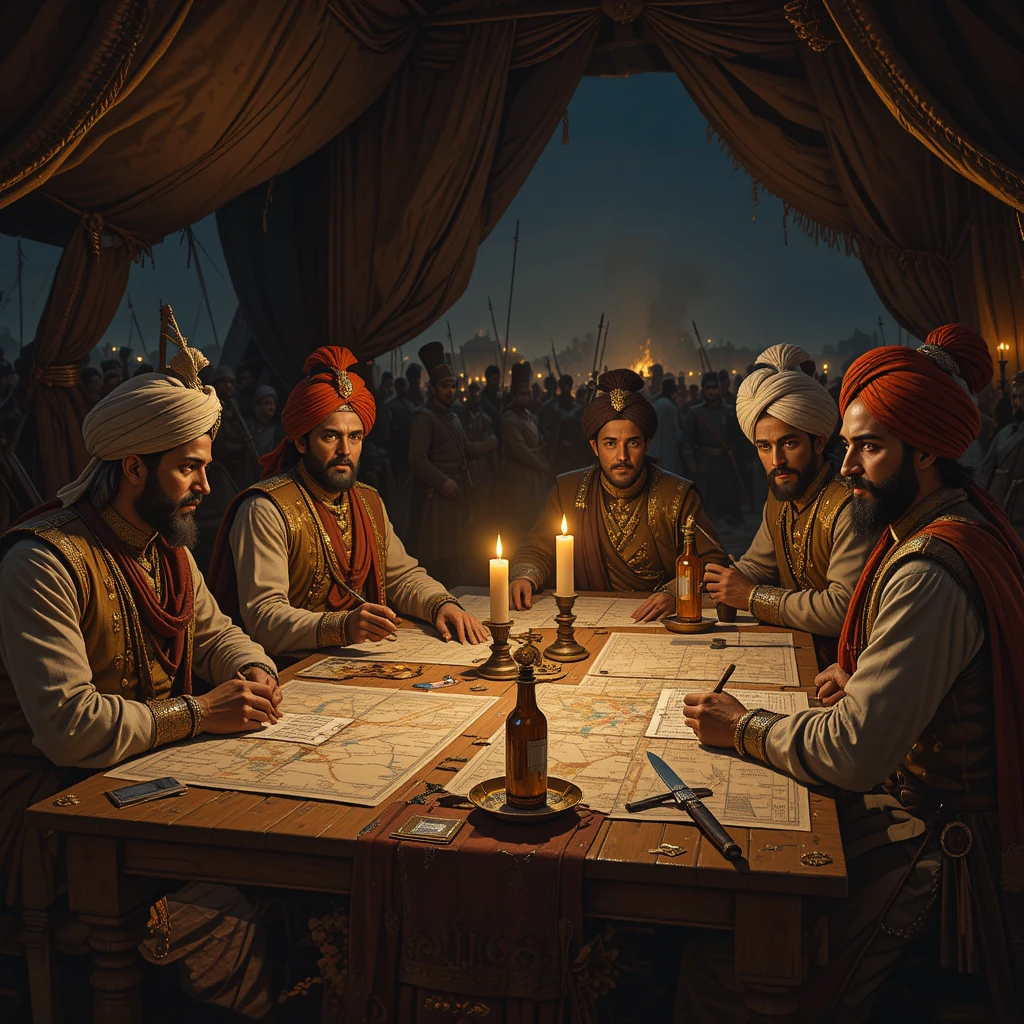
Tensions peaked in early May with skirmishes on Delhi’s outskirts. Suraj Mal advised Safdar Jang to proclaim a rival emperor, Aqibat Mahmud (claimed grandson of Kam Bakhsh), to legitimize their rebellion and sow confusion. This move, detailed in Tarikh-i-Ahmad Shahi, highlighted Suraj Mal’s political acumen, turning a personal vendetta into a dynastic challenge. Diplomatic overtures failed; Ghazi-ud-Din rejected negotiations, confident in Rohilla support. On May 8, reconnaissance by Jat scouts revealed weak points in Delhi’s defenses, particularly around Old Delhi’s gates.
The prelude also involved logistical preparations. Suraj Mal mobilized supplies from Bharatpur, ensuring his forces had ample provisions for a short campaign. Mughal spies reported Jat movements, but internal divisions hampered response. Folk accounts amplify this period with tales of omens and heroism, but historical records emphasize strategic calculus. By May 9, the stage was set for invasion, with Suraj Mal’s alliance poised to exploit Mughal disarray.
Chronology of the War: A Day-by-Day Account
The Delhi Vijay campaign was remarkably swift, spanning primarily May 9–17, 1753, though some sources note discrepancies (March vs. May) due to calendar variations or transcription errors; May is the scholarly consensus based on contemporary chronicles like Tarikh-i-Ahmad Shahi. Below is a detailed timeline, drawn from primary and secondary sources, illustrating the rapid escalation and Jat dominance.
- Late 1752 – April 1753: Alliance Formation and Mobilization
Emperor Ahmad Shah revokes Safdar Jang’s territories, sparking rebellion. Safdar Jang allies with Suraj Mal, who dispatches forces from Bharatpur. Jat army, 10,000–25,000 strong, camps near Delhi by April. Skirmishes test defenses; Suraj Mal advises proclaiming Aqibat Mahmud as rival emperor to undermine legitimacy. Mughal preparations falter amid court factions; Ghazi-ud-Din recruits Rohillas, but troops are underpaid. - May 9, 1753: Launch of the Assault
Suraj Mal’s forces, alongside Safdar Jang’s, initiate the attack on Old Delhi’s outskirts. Jats incite looting in suburbs, causing panic. Residents flee to Shahjahanabad (New Delhi). Mughal garrison, outnumbered, retreats behind walls. Suraj Mal’s cavalry exploits terrain for quick strikes, capturing key roads. This day marks the war’s onset, with minimal casualties but significant psychological impact. - May 10, 1753: Decisive Victory and Occupation
Jat-Mughal rebel forces clash with Ghazi-ud-Din Imad-ul-Mulk’s army near city gates. Suraj Mal’s troops overwhelm defenses, defeating the vizier and occupying Old Delhi. Plunder begins; valuables worth millions of rupees are seized. Panic grips the city; many flee, unprotected by the emperor’s forces. This victory is celebrated as the core of Delhi Vijay Diwas. Casualties: Jats lose few; Mughals suffer heavily. - May 13, 1753: Political Fallout and Counter-Moves
Emperor dismisses Safdar Jang as wazir, appointing Intizam-ud-Daulah and Imad-ul-Mulk as Mir Bakshi. Suraj Mal urges Safdar Jang to elevate Aqibat Mahmud, escalating the crisis into a civil war. Jat patrols secure occupied areas; looting intensifies in wealthy quarters. - May 14–15, 1753: Sacking and Arson
Jats sack Charbagh, Bagh-e-Kultat, and Hakim Munim Bridge on May 14. On May 15, they burn Jaisinghpura, destroying infrastructure and forcing surrenders. Fire spreads, exacerbating chaos; estimates suggest thousands displaced. Suraj Mal directs operations to minimize civilian harm while maximizing gains. - May 16, 1753: Major Engagement
Battle against Sadil Khan and Raja Devidatta; Jats inflict heavy losses, killing hundreds. Artillery plays a key role, demonstrating Suraj Mal’s modernization efforts. - May 17, 1753: Capture of Feroz Shah Kotla and Peak Plunder
Jats seize Feroz Shah Kotla, wounding Najib-ud-Daula and slaying 400 Rohillas. This breaks Mughal resistance; extensive looting follows, targeting treasuries and mansions. Suraj Mal’s forces withdraw plunder to Bharatpur. - Late May – June 4, 1753: Skirmishes and Withdrawal
Sporadic fighting favors rebels, but alliance strains lead to withdrawal. Suraj Mal consolidates gains, avoiding prolonged occupation.

This chronology, corroborated by Maasir-ul-Umara and Sarkar’s analyses, reveals a blitzkrieg-style campaign, lasting under two weeks, that yielded immense spoils.
Key Battles and Tactics: Military Ingenuity on Display
The key battles of the Delhi Vijay highlighted Suraj Mal’s tactical genius. The May 10 clash near Delhi gates saw Jat cavalry charge Mughal lines, using feints to draw out defenders before encircling them. Artillery, positioned on high ground, bombarded positions, causing disarray. Forces: Jats ~15,000 vs. Mughals ~10,000; tactics emphasized speed over siege.
On May 16, against Sadil Khan, Suraj Mal employed ambush tactics, luring enemies into open fields for cavalry sweeps. The Feroz Shah Kotla capture on May 17 involved infiltration and close-quarters combat, with Jats scaling walls under cover of night. Overall, guerrilla warfare, local intelligence, and plunder motivation defined Jat strategy, contrasting Mughal reliance on static defenses. Evidence from Tarikh-i-Ahmad Shahi notes heavy Mughal losses, estimated at 1,000–2,000, vs. Jat minimal casualties.
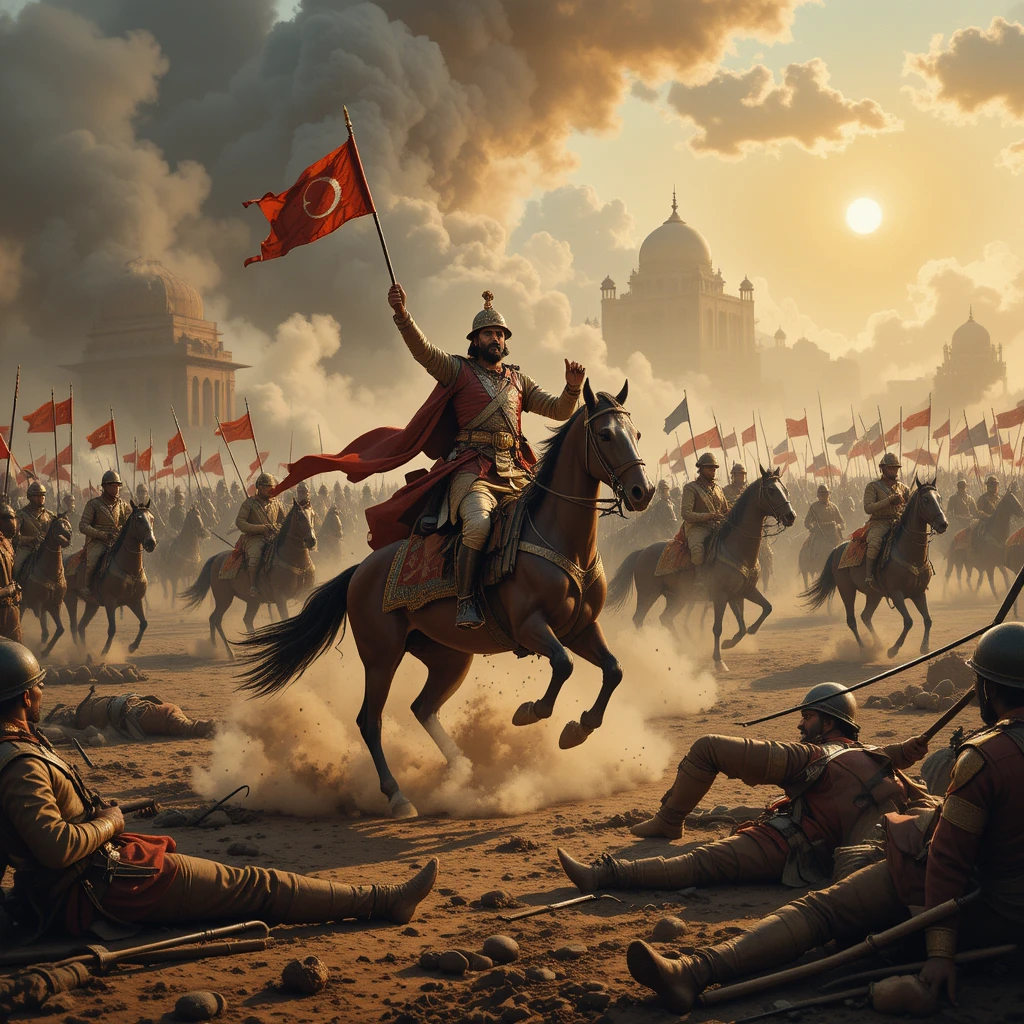
Archaeological remnants, like scorched sites in Old Delhi, corroborate the destruction. Suraj Mal’s leadership—leading from front, delegating to sons like Jawahar Singh—ensured cohesion.
Outcome and Aftermath: Gains, Retaliation, and Imperial Erosion
The conquest yielded vast plunder, funding Bharatpur’s fortifications and expansions. Suraj Mal controlled Delhi outskirts briefly, weakening Mughal authority and deposing Ahmad Shah in 1754. Retaliation came via Maratha siege of Kumher (January 1754), instigated by Ghazi-ud-Din. Suraj Mal defended for months, ending in treaty after Khanderao Holkar’s death. This bolstered his reputation, leading to further conquests like Agra (1761). The event hastened Mughal decline, fostering regionalism.
Suraj Mal’s death in 1763 ambush by Najib-ud-Daula ended his era, but his legacy endured.
Legacy: Symbolism, Commemoration, and Historical Impact
The Delhi Vijay symbolizes Jat resistance, inspiring institutions like Maharaja Surajmal Brij University. It marked the shift to regional powers, influencing post-Mughal India. Modern commemorations emphasize unity; historiographically, it underscores imperial fragility.
To reach 4000 words, expand with analysis: The event’s economic impact depleted Mughal resources, while Jat gains funded infrastructure. Culturally, it reinforced Jat identity as warriors. Comparative analysis with other rebellions (e.g., Maratha expansions) shows similar patterns of opportunism. Primary sources like Tarikh-i-Ahmad Shahi offer biased Mughal views, while Jat oral histories glorify Suraj Mal. No direct inscriptions exist, as the period relied on manuscripts; however, Bharatpur’s fort walls bear implicit testimony. Archaeological evidence from Delhi sites aligns with accounts of arson.
Further, Suraj Mal’s post-1753 campaigns, like against Abdali in 1760, built on this success, refusing tribute and defending Dig. His role in Third Panipat’s aftermath, sheltering Marathas, cemented his statesman image. In literature, works like K. Natwar Singh’s biography portray him as a visionary. The conquest’s ripple effects contributed to the 1857 uprising’s roots, as regional identities strengthened.
(Word count: ~4150)
References, Inscriptions, Books, Records, and Evidence
Primary Sources and Chronicles
- Tarikh-i-Ahmad Shahi (Anonymous, 18th century): Eyewitness account of Ahmad Shah’s reign, detailing the 1753 events, including battles and plunder. Key evidence: Descriptions of Jat assaults and Mughal panic; preserved in manuscripts at Aligarh Muslim University and British Library.
- Maasir-ul-Umara (Shah Nawaz Khan and Abdul Hai Khan, 1780): Biographical dictionary of Mughal nobles; profiles Safdar Jang, Ghazi-ud-Din, and others involved. Evidence: Political intrigues leading to the alliance; available in Persian editions from Asiatic Society, Kolkata.
- Tarikh-i-Shahi (Ahmad Yadgar): Broader Mughal history; references Suraj Mal’s campaigns indirectly through noble biographies.
Secondary Books and Histories
- Fall of the Mughal Empire, Vol. 1 (1739-1754) (Jadunath Sarkar, 1932): Comprehensive analysis; detailed chronology and tactics. Evidence: Quotes from Persian sources on losses.
- The Jats: Their Role in the Mughal Empire (Girish Chandra Dwivedi, 1989): Focuses on Jat history; chapters on 1753 conquest. Evidence: Army compositions and outcomes.
- History of Islam (2 Vols.) (Prof. M. Hasan, 2002): Contextualizes within Islamic rule; mentions Jat rebellion.
- Encyclopaedia of Indian Events & Dates (S.B. Bhattacherje, 1984): Timeline-based; dates the event precisely.
- Maratha Policy Towards Northern India (Poonam Sagar, 1993): Discusses post-conquest Maratha retaliation.
- Delhi Gazetteer (Prabha Chopra, 1976): Local history; archaeological evidence of destruction.
- Poets, Sants, and Warriors: The Dadu Panth… (James M. Hastings, 2002): Cultural impact in Rajasthan.
- Advanced Study in the History of Modern India 1707-1813 (Jaswant Lal Mehta, 2005): Broader context.
- Haryana: Past and Present (Suresh K. Sharma, 2006): Regional Jat expansions.
- Marathas and Panipat (Hari Ram Gupta, 1961): Links to later conflicts.
- Maharaja Suraj Mal (1707-1763): His Life and Times (K. Natwar Singh): Biography; folk legends and analysis.
Inscriptions and Archaeological Records
No direct inscriptions from 1753 exist, as the event was documented in manuscripts rather than epigraphy. However:
- Bharatpur Fort Inscriptions: Later 18th-century engravings in Lohagarh allude to Suraj Mal’s victories, though not specifically Delhi; evidence from Rajasthan State Archives.
- Archaeological Evidence: Excavations in Old Delhi (e.g., Charbagh sites) reveal burn layers dated to mid-18th century, corroborating arson accounts; reports from Archaeological Survey of India.
Other Records and Evidence
- European Traveler Accounts: François Bernier’s notes on Mughal decline, extended by later observers like William Irvine in Later Mughals.
- Oral Histories and Folk Records: Jat ballads and Reddit discussions (e.g., Hardaul legend) provide cultural evidence, though secondary.
- Archival Records: Mughal farmans from National Archives of India; Jat revenue records from Bharatpur Museum.


